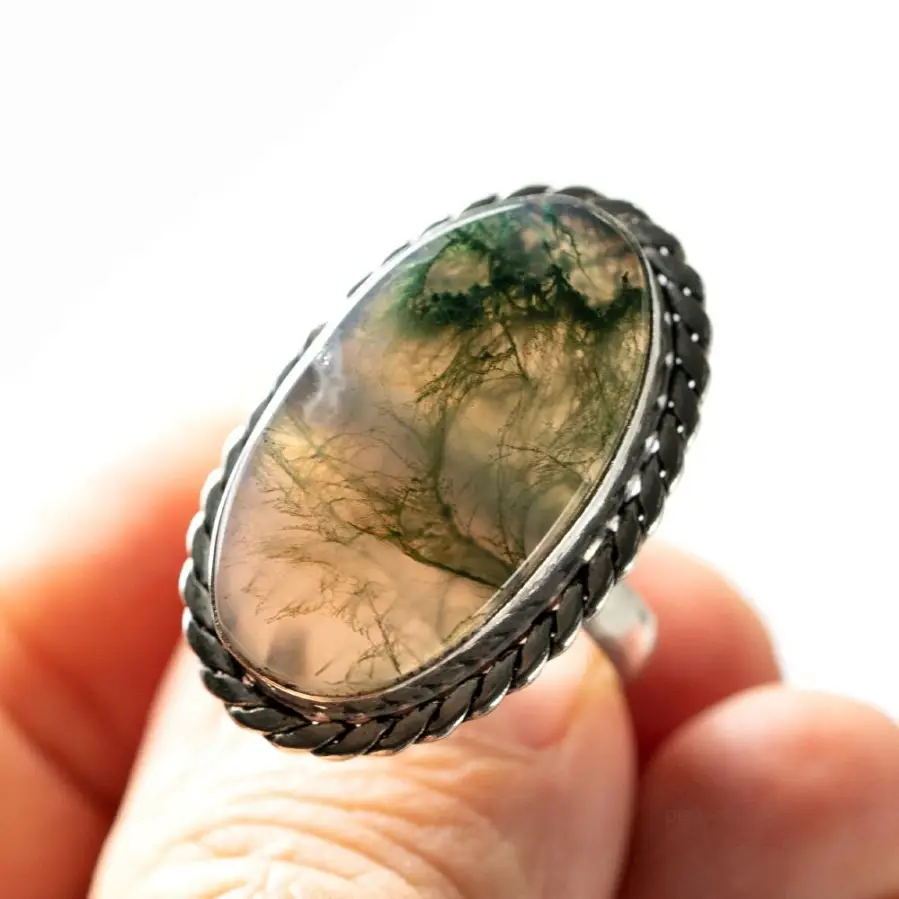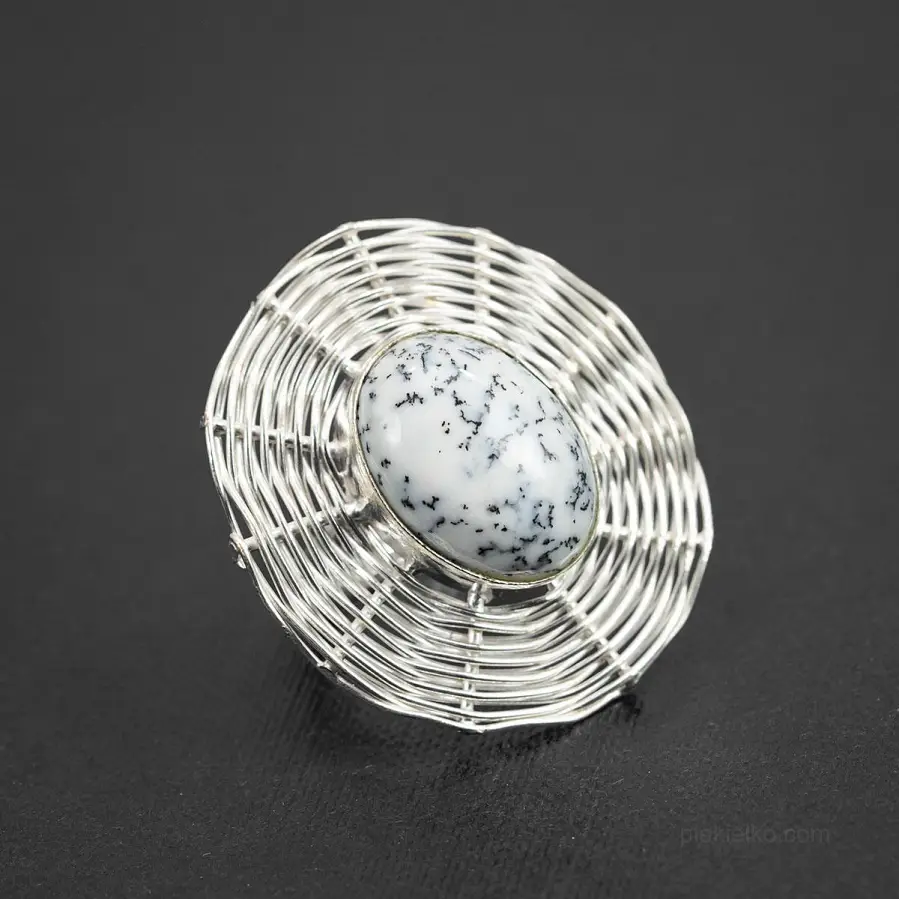Intermediates
Gallantry and accessories
Blog Piekiełka
Dendrites - crystals that grow like trees

Minerals and plants sometimes show striking external similarities, which in the past prompted naturalists to make unwarranted rationally broad generalizations. German scientist Johann Friedrich Henkel (1679-1744), a teacher of the young Mikhail Lomonosov, wrote an essay titled. "Saturnian Flora. On the affinity of plants with the mineral kingdom." He claimed that there was a primordial relationship between the plant and stone kingdoms, that plants mimic the underground veins of minerals, and that minerals grow in the likeness of plants.
Such ideas were apparently not alien to Linnaeus either, when he tried to extend to minerals the principles of his two-part nomenclature and attributed "paternal and maternal origins" to crystals. In contrast, strong opposition to such views was expressed by Johann Wolfgang von Goethe, not only a distinguished poet but also a scientist, who in 1789 published an appeal to colleagues "On crystallization and growth." However, it would be an exaggeration to treat this as a true scientific discussion, and attempts to portray some mineral forms as transitional to plants occurred until the late 19th century.
Plant-like minerals
What reason was there to look for and find convergence between a "cold" mineral and a living organism, objects traditionally opposed to each other? Creating the "Catalogue of Stones and Fossils" for the mineralogical department of the Academy of Sciences in 1741, Mikhail Lomonosov included descriptions of "iron flowers" of copper and silver, looking like trees. Today, this is how similar mineral formations are referred to, only according to traditional scientific nomenclature along the lines of the Greek: "dendrites" from the Greek word dendron meaning "tree."
Why do mineral crystals take on such an original shape, truly resembling plants, and why do some dendrites look quite like fossilized ferns? The shortest and very general answer to the question of why crystals grow is: because the law of nature, specifically the second law of thermodynamics, dictates so. The processes occurring in the system "growing crystal and the medium that feeds it" follow the laws of physics and proceed in a direction that ensures a decrease in free energy, that is, that part of the energy of the system that is capable of doing work. This is, in this case, the energy of the uncompensated chemical bonds of the particles of the crystallizing substance that move freely and chaotically in the solution, melt or gaseous mixture. Part of this energy is used to deliver the particles to the growing crystal, and the rest is converted into heat and dissipates. The crystal grows at the rate at which the free energy of the system decreases.
It is important to note an important detail: free bonds still remain on the surface of the crystals, as they are only compensated from the inside. Thus, the surface of the crystal is also a carrier of energy, and a force field forms around it, taking on the "mechanics" of growth. The growth of a crystal means increasing its surface area, and thus its free energy. However, this surface area must also be subject to general laws, and this means that the crystal, while increasing its mass, must at the same time strive to be as compact as possible. For a given mass of crystal, the surface area must be as small as possible. One might think that, then, all crystals of a particular mineral should have this balanced form.
For such crystalline creations as "trees" within the framework of ideal crystallization there is no place at all. Their shape is far from exemplary and does not correspond to the idea of balance. So are dendrites formed "outside the law"? However, the reality often deviates from the theory: everyone knows that any mineral is encountered in a variety of crystal forms, not just in one ideal one.
The principle is right: the system strives for a certain state, but this does not mean that it always achieves this ideal state. A crystal of a mineral would be ideal and would achieve an equilibrium state if it grew indefinitely under ideal conditions. And since this is not the case, all real crystals are not balanced. The crystallization processes occurring under real conditions are complete, but energetically they remain incomplete. The link between energy state and form is more noticeable in the initial phase of growth, when the mass of the crystal is still small. Small crystals are generally more perfect than large ones.
The further away from the equilibrium state, the more tolerant the system is to the form of the crystal. Figuratively speaking, we can say that under such conditions the crystal tends to gain mass quickly, not caring much about its appearance. And this is a very positive circumstance for us, because it gives rise to an infinite variety of forms of natural crystals, in addition to providing them with individual characteristics, personal signs of origin. The richness of the natural forms of crystals, is primarily a variety of deviations from the state of equilibrium and a wealth of imperfections. The perfect crystal is only one, among the imperfect ones you can choose at will.
Why do crystals grow like trees?
Dendrites are formed from the rapid crystallization of minerals from solutions penetrating tiny cracks in the rock or intergranular planes. Crystal trees are usually formed by oxides or hydroxides of manganese and iron and then have dark colors, but dendrites made of other substances also occur.
The solution that feeds the growth of a cluster of small crystals in the form of a dendrite penetrates the fissure and nourishes the crystals. The process is faster where there is fresh solution. If this phenomenon could be observed, it would be possible to see that the crystal takes matters into its own hands: it seeks nourishment for itself. Bypassing obstacles, penetrating the gaps between the grains of the host rock, it grows in separate branches, each striving to develop toward a stronger solution, away from competing neighboring branches.
Contrary to the principle of minimization, the surface area of the crystal grows strongly, but thanks to this, the goal - crystallization of the solution - is achieved in a shorter time. This is how a dendrite is formed. The energy price of the trade-off is not high: it's a minor addition that could be made by waiting for equilibrium to be reached. But it is true that this can be done only theoretically. This is how trees and shrubs grow, and their branches also grow in different directions, pursuing sources of food - light and air. One can understand Johann Henkel, who saw the similarity between minerals and plants. And not only the external similarity, but also the ability to adapt to specific conditions.
Dendrites are sometimes two-dimensional and three-dimensional. Two-dimensional ones grow on the surface of narrow crevices in rocks. Three-dimensional dendrites, on the other hand, grow in open rock spaces.
Dendrite stone in a ring



© Piekielko.com


